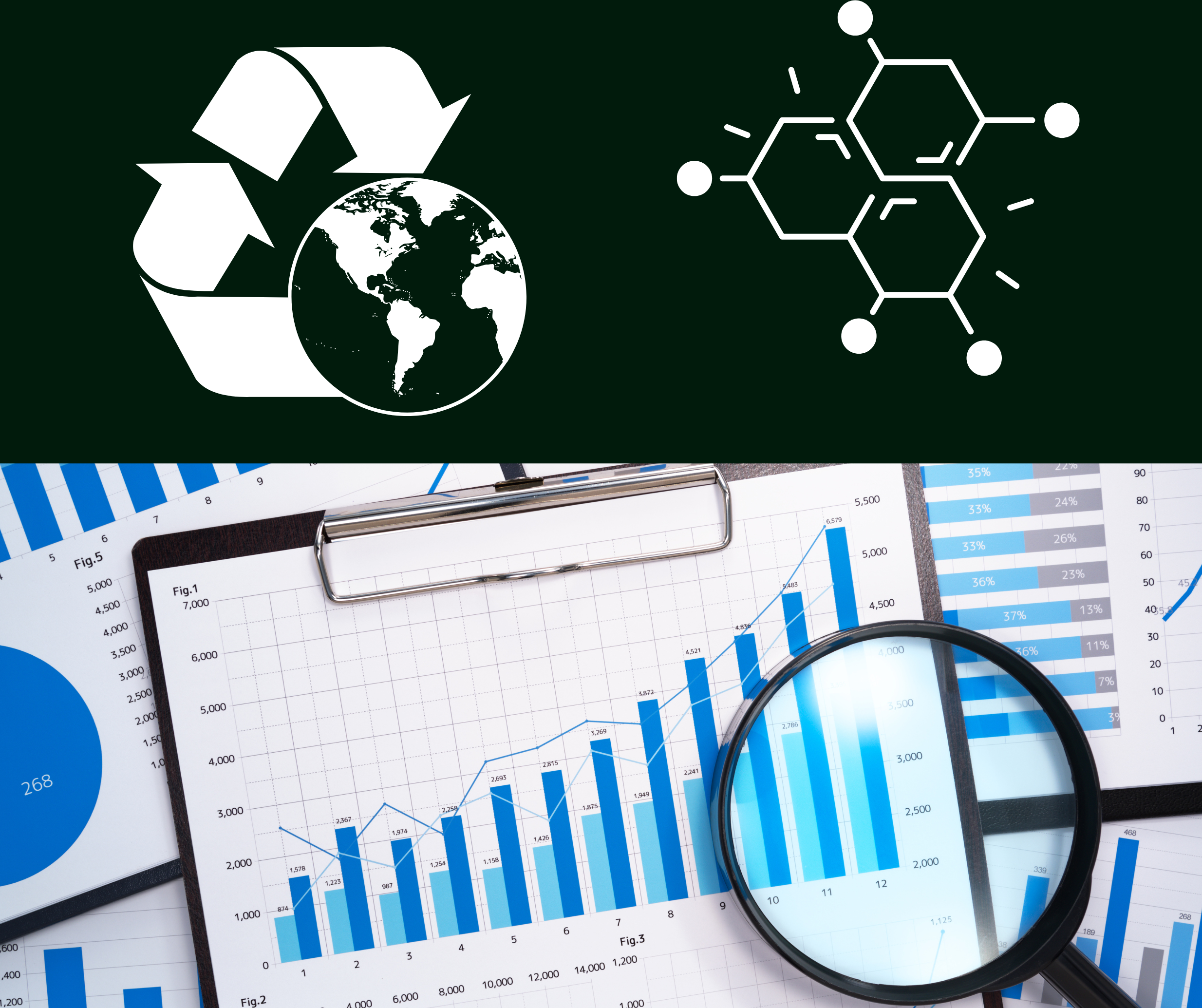The textile chemical recycling market is undergoing significant changes as sustainability and circular economy principles drive the evolution of production and supply chains in the textile and fashion industries. Thanks to innovations in chemical recycling technologies, textile waste processing is becoming more scalable and efficient, with higher recovery rates for fibers like polyester and cotton blends. This is happening against a backdrop of increasing regulatory pressures and growing consumer demand for eco-friendly materials, prompting major manufacturers and brands to adopt recycled chemicals in fabric production.
The global textile chemical recycling market is expected to grow from USD 3.9 billion in 2025 to USD 8.7 billion by 2032, reflecting a compound annual growth rate (CAGR) of 11.8% during this period. This growth is being driven by advances in recycling efficiency and the wider adoption of chemical recycling technologies across various sectors, including apparel, automotive, and industrial textiles.
Key Market Insights
- Increased Production Capacity: In 2024, chemical recycling production capacity surged by 22%, primarily driven by manufacturers in the Asia Pacific region. By integrating advanced enzymatic breakdown processes, manufacturers improved polyester regeneration efficiency by over 15%, outpacing traditional mechanical recycling. This growth in production capacity supports the increasing demand for recycled textiles, especially as businesses scale up their recycling operations.
- Surging Demand in High-Volume Sectors: Sectors like fast fashion and technical textiles are rapidly adopting chemically recycled textiles. In 2024, North America saw a 34% rise in imports of recycled chemical intermediates, demonstrating a clear shift toward using recycled materials to reduce dependence on virgin raw materials and optimize cost structures.
- Pricing Parity and Market Stability: The cost of recycled polyester has become increasingly competitive, with the price difference narrowing significantly in 2025 between recycled and virgin fibers. This price stabilization encourages more manufacturers to adopt chemical recycling technologies, supporting both cost competitiveness and sustainability goals.
- Advances in Catalysis: Breakthroughs in catalyst innovation have improved polymer depolymerization rates by 18% in emerging markets, offering higher purity recycled chemicals. These advancements create new revenue streams and expand the use of recycled materials in sensitive applications such as high-performance textiles.
Market Segmentation and Regional Focus
The textile chemical recycling market is categorized by various factors, including recycling technologies, fiber types, applications, and end-user industries:
- Recycling Technology: Hydrolysis, Glycolysis, Methanolysis, Enzymatic Recycling, and others
- Fiber Type: Polyester, Nylon, Cotton Blends, Acrylic, and others
- Applications: Apparel, Automotive Textiles, Home Furnishings, Industrial Textiles, and others
- End-User Industries: Fast Fashion, Sportswear, Automotive, Healthcare, and others
Regional Breakdown
- North America: U.S. and Canada
- Latin America: Brazil, Argentina, Mexico, and others
- Europe: Germany, U.K., Spain, France, and others
- Asia Pacific: China, Taiwan, India, Japan, South Korea, and others
- Middle East & Africa: Saudi Arabia, Israel, South Africa, and others
Leading Players in the Market
Key companies in the textile chemical recycling market include Eastman Chemical Company, BASF SE, Loop Industries, Jeplan Inc., Worn Again Technologies, and others. Some of these companies are expanding their market reach by acquiring recycling technology startups or forming strategic partnerships with major apparel brands. For instance, Eastman Chemical’s acquisition of new recycling technologies led to a 25% increase in their recycled polymer output in 2024, while BASF’s collaborations with apparel brands helped drive double-digit revenue growth.
Key Drivers of Market Growth
- Sustainability Regulations: Growing global regulatory pressure is a key driver of market growth. In 2024, government mandates requiring a minimum percentage of recycled content in textiles led to a 28% increase in chemical recycling adoption.
- Technological Advancements: Enzymatic and catalytic recycling methods have lowered processing costs and times, enabling manufacturers to scale up operations more effectively.
- Consumer Demand for Eco-Friendly Products: As consumers become more eco-conscious, demand for circular fashion is on the rise. In particular, Europe and North America have witnessed a 40% annual increase in sustainable purchasing behaviors, pushing companies to adopt recycled materials.
- Rising Crude Oil Prices: Higher crude oil prices have made virgin polyester more expensive, making recycled polyester more competitive. This shift is fueling the expansion of the textile chemical recycling market, as companies seek to reduce costs by adopting recycled materials.
Emerging Market Trends
In 2024, the market is shifting from single-stream polyester recycling to multi-fiber composite breakdown, thanks to advances in chemical recycling technologies. This trend helps valorize blended textiles, previously discarded as waste, and opens new market opportunities for high-quality recycled materials. Partnerships between chemical recyclers and fashion brands are also enabling the production of certified circular products, ensuring traceability and boosting consumer confidence in recycled textiles.
Market Opportunities
One of the most promising segments is enzymatic recycling, which is expected to experience a CAGR exceeding 15% by 2030. This technology offers a lower environmental impact and is ideal for processing delicate fiber blends, such as those found in high-end fashion. The growing demand for recycled polyester from fast fashion brands also presents significant growth opportunities, as does the automotive sector, which is increasingly using recycled materials for lighter and stronger composite parts.
Asia Pacific is poised to be a key growth region, driven by government incentives and increasing textile manufacturing output. By 2028, it is expected that the region’s chemical recycling market revenue will double.
